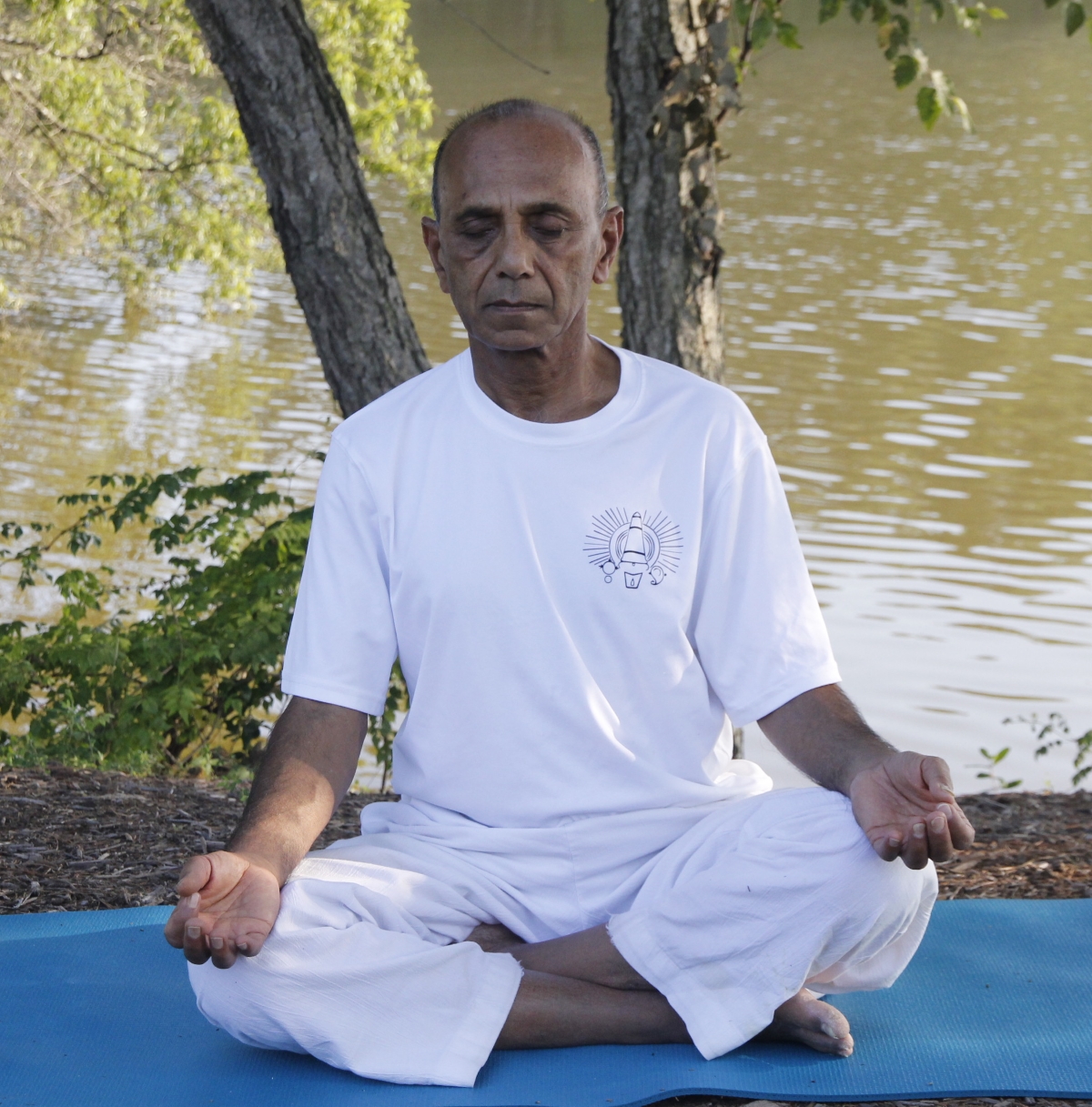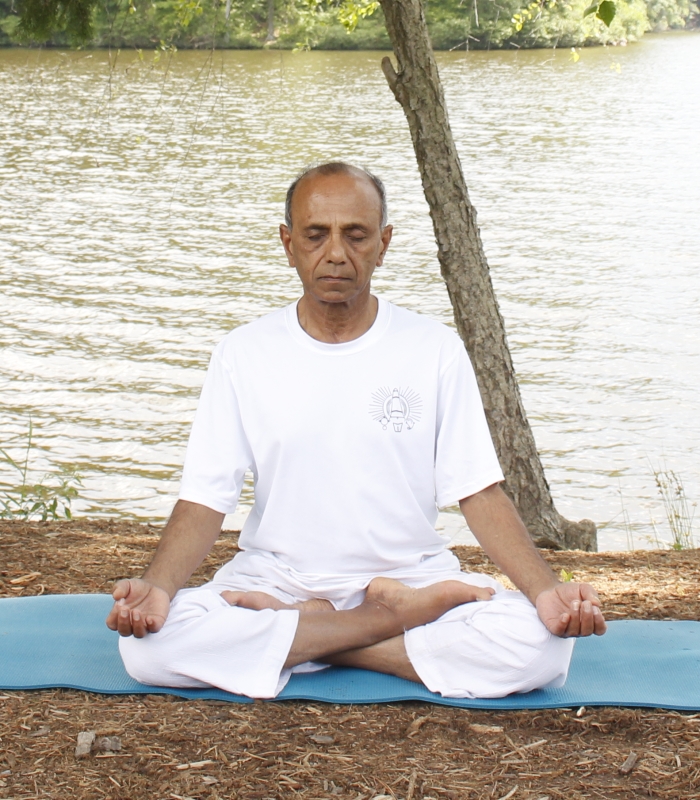
Sukhasana (Easy Pose)
Here are the three most common reasons why people don’t meditate.
- Reason #1: "I don’t have time"
- Reason #2: "I can’t sit at one place for 20 minutes"
- Reason #3: "My mind is constantly racing – I can’t keep it quiet even for a minute"
Let us take a close look at these three reasons for not meditating.
Reason #1; I don’t have time
"I have too much going on in my life. I am already short of time and am stressed out because I can’t find the time to do the things I need to do. If I spend time on meditation, I’d have even less time in the day and my stress level will definitely increase". I am sure many of you can identify with this situation. It is absolutely true that both job and family life demand a lot of time and attention. We are constantly dealing with difficult situations at work and at home. Those situations can make life stressful. What we need to realize is that when we are stressed out we make poor choices in life. In fact, for the most part, stress is a result of these poor choices that we make under stressful conditions. It is catch-22 — we are stressed out because we made a poor choice, and we make poor choices because we are stressed out! This is the conundrum that we need to understand and get out of.
This is where the power of meditation comes in. A regular practice of meditation is known to clear the thinking process so we can actually start making better choices in life. When we make a proper choice, we have a better control over the situation at hand. As a result of being in control, there is a better chance that we will not be stressed out. Most of the time, our actions are determined by a "knee jerk" reaction to every situation that we are faced with. Since this is usually not a well thought out response, it is likely to cause stress. When, on the other hand, we are able to respond pro-actively, we seem to be in control of the situation and will act from the position of calmness and understanding.
You might say, "sure, I understand that meditation may be helpful, but I still don’t have time to do it". This is where you need to sit down and reflect on all the time that you spend in a day on activities that could be labeled "unnecessary or irrelevant". Look at some of the things most people spend time on and see if any of them apply to you:
- Watching youtube videos for entertainment
- Updating your facebook page frequently and watching all the videos that people have labeled "must watch"
- Constantly checking for email messages
- Playing video/computer games in your "spare time"
- Gossiping
- Endless phone conversations
- Procrastinating
- Daydreaming
- Worrying about the future
The list could go on. I have just listed some of the items that came to my mind based on what I have observed or heard from others. I think you get the idea. I have a feeling that even if you are engaged in a small portion of the above activities, you will realize that it can’t be hard to cut down 20-30 minutes from the above "unnecessary" activities. That’s the time you can devote to your meditation and start deriving the benefits that I have mentioned above. Once you start practicing meditation on a regular basis, you will start realizing some of the benefits that I have alluded to. That may, in fact, encourage you to increase your time for meditation.
As I write this article, I realize that I have myself been procrastinating writing it for the last 3-4 days. I always found myself confronted with something more "pressing" and demanding. Today I finally decided to shut down my "outlook email" and my news website so I could sit down and focus on writing this piece on meditation.
It is important to recognize that meditation can actually teach us how to manage time better and make the most of the time available during the day.
Reason #2: I can’t sit at one place for 20 minutes

Padmasana (Lotus Pose)
"I see all these pictures of yogis sitting in the Lotus Posture in meditation. I can’t sit in any cross-legged position on the floor for even five minutes before my knees, hips, spine etc. begin to hurt. Moreover, my mind is too restless. I will feel even more restless if I were to try to sit in one place for any length of time."
This is a common scenario for a lot of people who are not used to sitting on the floor. This is precisely the reason why the whole practice of Hatha Yoga, which includes asana (physical postures), pranayama (breathing) and cleansing techniques, evolved over time. As many of you perhaps know, the main purpose of the practice of yoga is to learn how to keep the mind calm under all circumstances in life. To get to that state of the mind, Patanjali, in the Yoga Sutras, has given us the "8 limbs of yoga". The last three, and perhaps the most important of the three, are related to the practice of meditation. The recommended position for meditation in our ancient texts is indeed a seated cross-legged position. But we must realize that these recommendations were given when the only place people could sit was on the floor for the most part. In those days people did not sit in chairs or sofas. So it was easy for them to sit on the floor. Because of our modern lifestyle we have fewer and fewer occasions to sit on the floor. As such, the knees, hips and the spine are not comfortable sitting on the floor. It is the regular practice of Hatha Yoga involving asana, pranayama and relaxation that will help make the body strong and flexible so we can start sitting down for meditation.
However, if you are a beginner in the practice of yoga, your body may still not be ready to assume a seated cross-legged posture for meditation. In that case, you should feel free to sit in a chair, on a bench, or a stool so you can stay in that position for the duration of meditation without feeling any pain or discomfort. Other options are: sit on a bolster or a block so that your buttocks are lifted up, releasing tension from the back as well as the knees. You may even try to place a folder blanket or a cushion under your knees as well if they tend to remain lifted above the floor.
One of the most common guidelines for a sitting posture, irrespective of where you decide to sit, is that the spine should remain comfortably tall and erect, if possible.
Reason #3: My mind is constantly racing – I can’t keep it quiet even for a minute
This is one of the most common misconceptions people have that they have to bring their mind to a quiet, thoughtless state before they can meditate. Nothing could be farther from the truth!
The most common form of meditation that I practice and teach in my classes is what is called "mantra meditation". In this meditation we set the intention to repeat a mantra mentally for the intended duration of our meditation. A mantra is a short word or a phrase that you choose yourself as a kind of a prop that you can come back to during meditation.
It is important to remember that meditation is an activity in the mind. Why does the mind keep drifting away from the object of meditation? Because that’s just the very nature of the mind. All its life it has been given the freedom to jump from one topic to next, from one thought to next, all in quick succession. When no other activity is going on, it likes to daydream and think about pleasant things, either in the past or projecting them into the future. When we try to engage the mind in some productive activity, it knows how to find an excuse to stay off-topic and focus on some negative feelings from the past or some worry about the future.
During meditation, we learn to become aware of the thoughts that come up, acknowledge them and go back to the object of meditation. As the meditation deepens, it is possible that some of the deep-seated feelings and emotions in our sub-conscious mind might come to the surface. These might seem highly disturbing in the beginning. However, once we recognize them, it actually might help weaken their influence on us. From this point of view it is important to let the thoughts and emotions come to the mind so we can understand ourselves better. This will gradually help us cleanse the mind of negative emotions.
Over a period of time, with a regular meditation practice, the mind begins to understand the positive effect of meditation and may actually be conducive to staying quiet for some time.
The main message that I would like to convey is that it is important that you allocate a certain amount of quiet time when you can sit and meditate on a regular basis. Once you do it on a regular basis, you will start realizing the benefits of your meditation practice which hopefully will continue to motivate you to allocate even more time for your meditation practice.
If you would like to share your own meditation experience or have any questions about meditatio, please do so in the comments section on this page.
from Paramhansa Yogananda,
So, dear ones, meditate morning and night. Don’t waste your time. Once in a while let your mind run here and there, but don’t be bound by attachment to anything. Shut yourself in seclusion and meditate. At first your mind will rebel against your will; but if you are in earnest, you will eventually find that nothing else can satisfy you as meditation does. What freedom I find when I close my eyes! The joy of God possesses me. This is something real that is in my heart. What more in the way of miracles do you want to see than the miracle of the human body and of the cosmic body of Nature that God has created? The human body-battery is not sustained by food, but by every word (wave of cosmic energy) that is flowing through the medulla and brain and heart from the Creator Lord. Go to the source and feel God, and so find within that great bubbling Spring of joy and life.
–Sri Sri Paramahansa Yogananda (Journey to Self-realization, p363)
Dear Madhu,
It is nice to see your message. Hope things are going well. Thanks a lot for sharing this lovely quote from Paramahansa Yogananda.
Please convey my regards to Lakshmi.
Thanks Subhashji.
Planning again to visit Raleigh in the next few months. Look fwd to seeing you and learning some more yoga.
We spent about 7 days at Kaivalyadham near Lonavla. Both the treatment (naturopathy and panchakarma) were very good. We had an excellent yoga instructors there also.
Take care and best wishes from both Lakshmi and me.
Madhu